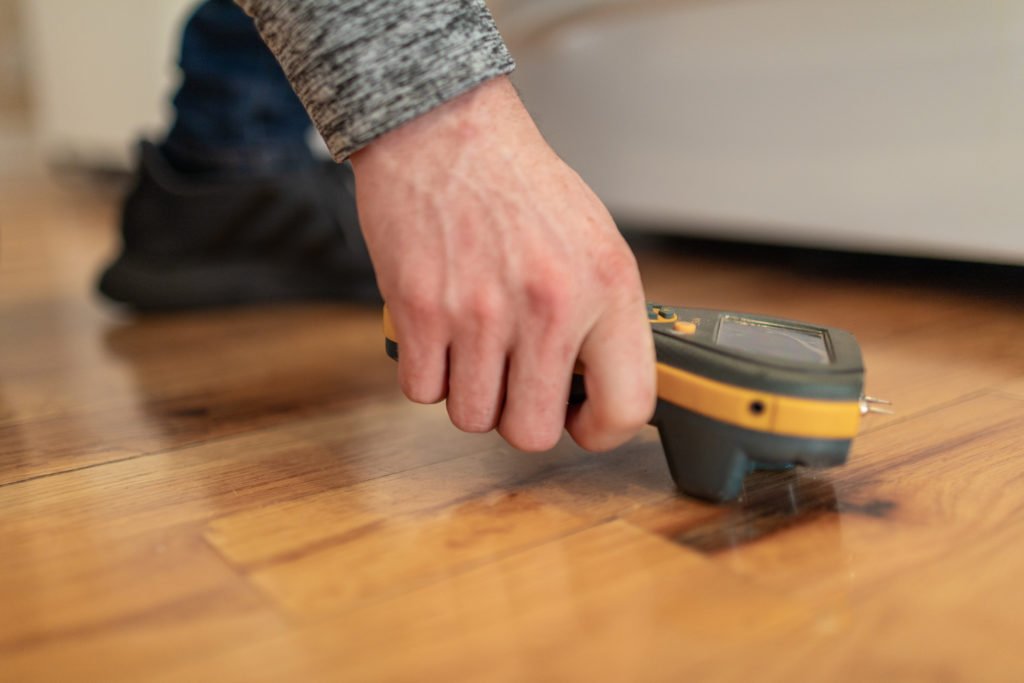Mold – Just The Facts:
Mold is a multi-cellular fungus that is found throughout nature. Molds thrive in damp environments and reproduce by the spreading of spores. Molds, along with other fungi play an important role in decomposing organic material. This allows dead cells to be broke down and composted into soil.
Molds growing in your home are performing the same function of decomposition. Whether on old food, shower walls, or under a leaking sink, mold is breaking down the cell walls of organic material. Although useful in nature, this can unfortunately be quite damaging to the structure and materials used in building your home; and in some cases be damaging to your health. Mold releases spores into the air as a means of reproduction. In addition, cellular debris, such as cell wall material, can be released into the building environment from amplification sites. A small area of mold growth can generate hundreds of millions of spores within the span of just a few days.
Spores and cellular debris are micro-particulates and, as such, can remain airborne for considerable periods of time traveling freely through tiny cracks, crevices, and holes in building walls, and roofs. Spores, and cellular debris from mold, are allergens and result in reports of itchy eyes, runny noses, headaches, and fatigue. The responses to these allergens differ from person to person so that neighboring building occupants may report very different reactions to mold amplification. Cellular debris from bacteria contain endotoxins which can produce allergic symptoms. At high levels, this material is an irritant and can produce flu-like symptoms. Spores and cellular debris can remain an indoor air quality problem even after active growth of an amplification site is corrected.
Rot is the result of a fungal infection of wood and wood products. Wood consists of cellulose and a complex hydrocarbon called lignin. The rot fungus can attack either the cellulose or lignin. If it attacks the cellulose the brown lignin is left and brown rot is the result. If the lignin is attacked the white cellulose is left producing white rot. In addition, there is a rot process produced by a fungus Poria. This fungus can start in moist soil and send rhizomes great distances through wood structures.
Environmental Requirements for Mold to Grow:
Mold needs two basic ingredients to grow: Organic material and moisture.
Organic Material
Mold needs organic material to grow because it feeds by breaking down cell walls. If you find mold growing on inorganic materials (shower walls, paint, concrete, etc) than the mold is likely feeding on organic material caught in the texture of the material. It is very common for small amounts of skin cells, dust, and other debris to be deposited on surfaces and provides enough food for mold to flourish in damp environments.
Mold and bacteria live on hydrocarbon based, organic materials. In buildings there are abundant organic materials such as wood, wood products, paper, adhesives, and glues. Even in the absence of organic building materials, dust and dirt, which collect on surfaces in buildings, are primarily organic and can, in the presence of water, readily support mold growth.
Specific building materials that can support this growth include:
Paper products, i.e. the paper on gypsum panels used for drywall, facing for insulation, wall coverings, etc.
Wood and wood products including dimensional lumber, plywood, oriented strand board, and particle board.
Resins and adhesives. For example, the resin that binds glass fibers together to form fiber glass board insulation can provide food for mold growth unless treated with a biocide.
Glue such as wallpaper paste
Oily surfaces
Moisture:
Moisture constantly enters building envelope components as liquid water, water vapor and infiltrating moist air. In addition, the envelope may contain water that has been built in during construction. If designed properly, the envelope will also continually dry due to moisture transport out of the envelope. If the rate of introduced moisture exceeds the rate of drying the water content of envelope components increases. Many building materials have the capacity to safely store water. For example, wood is not considered to be wet until its moisture content exceeds 17%. If a building component takes on enough moisture to exceed its storage capacity, it becomes damp and microbiological growth and rotting can occur.
Additional Information
Mold occurs naturally and is a part of our environment; mold is an integral part of nature’s digestive process. In the outdoors mold feeds off and breaks down vast amounts of debris such as dead plants, leaves, or other organic materials. As the mold colony grows and matures there is a point when spores are released which then travel via air currents or water. Mold does not need air, warmth, or light to propagate; mold grows best when there is little or no air flow. There must also be a food source in the mix; organic materials such as wood and paper products including drywall and insulation paper. Mold grows best in moist, dark areas with limited air flow. Temperature can accelerate mold growth. Spores need a food source – organic material – to grow and colonize. Wood, paper products, cellulose, building materials, natural fibers like cotton, leather, soil, and dust which contains dust mites and their feces and other organic matter and plants are samples of food sources. Moisture is the main ingredient that promotes mold spores to grow. When moisture is introduced it supplies what is needed for growth to begin. There are mold types that can grow in very warm temperatures and types that grow even in freezing temperatures. As the mold colony matures and grows it digests the available food source. When this occurs within a structure and the mold growth is unchecked the structure will eventually lose its integrity and be destroyed.

